George Lucas is one of the most important filmmakers of all time, but like any writer-director, his movies exhibit a range of qualities and are therefore worth ranking from worst to best. From pioneering the modern blockbuster with Star Wars to founding animation giant Pixar and visual effects trailblazer Industrial Light & Magic (ILM), Lucas's influence on the entire medium of filmmaking reverberates to this day. His work as a director, however, is often overlooked, in favor of the projects he wrote and produced, such as the Indiana Jones franchise and the Star Wars sequels.
SCREENRANT VIDEO OF THE DAY
There's no denying George Lucas's directorial output is remarkable. He innovated new ways to make movies that changed Hollywood forever. Lucas pioneered digital image capture and computer-generated set extensions on the Star Wars prequels, two techniques that are indispensable to modern mainstream blockbuster filmmaking. However, his obsession with CGI has not gone without controversy: notoriously, his hated Star Wars special editions have been criticized for the changes made to the original trilogy with updated yet mostly distracting computer-generated visual effects.
George Lucas began his career as a director while at USC, where his final year thesis film, Electronic Labyrinth: THX 1138 4EB, won a prize at the National Student Film Festival. That brought him to the attention of a young Steven Spielberg, who would go on to collaborate with Lucas on the Indiana Jones movies. As a director in the 1970s, Lucas would direct two feature films before commencing production on his most famous movie, Star Wars. Although he continued to work in the industry, largely as a writer and a producer, throughout the 1980s and 1990s, he would not actually direct another movie until he began work on the first of the Star Wars prequels more than 20 years later. Here is a list of every film George Lucas has directed, ranked from worst to best.
Star Wars: Episode II – Attack of the Clones (2002)
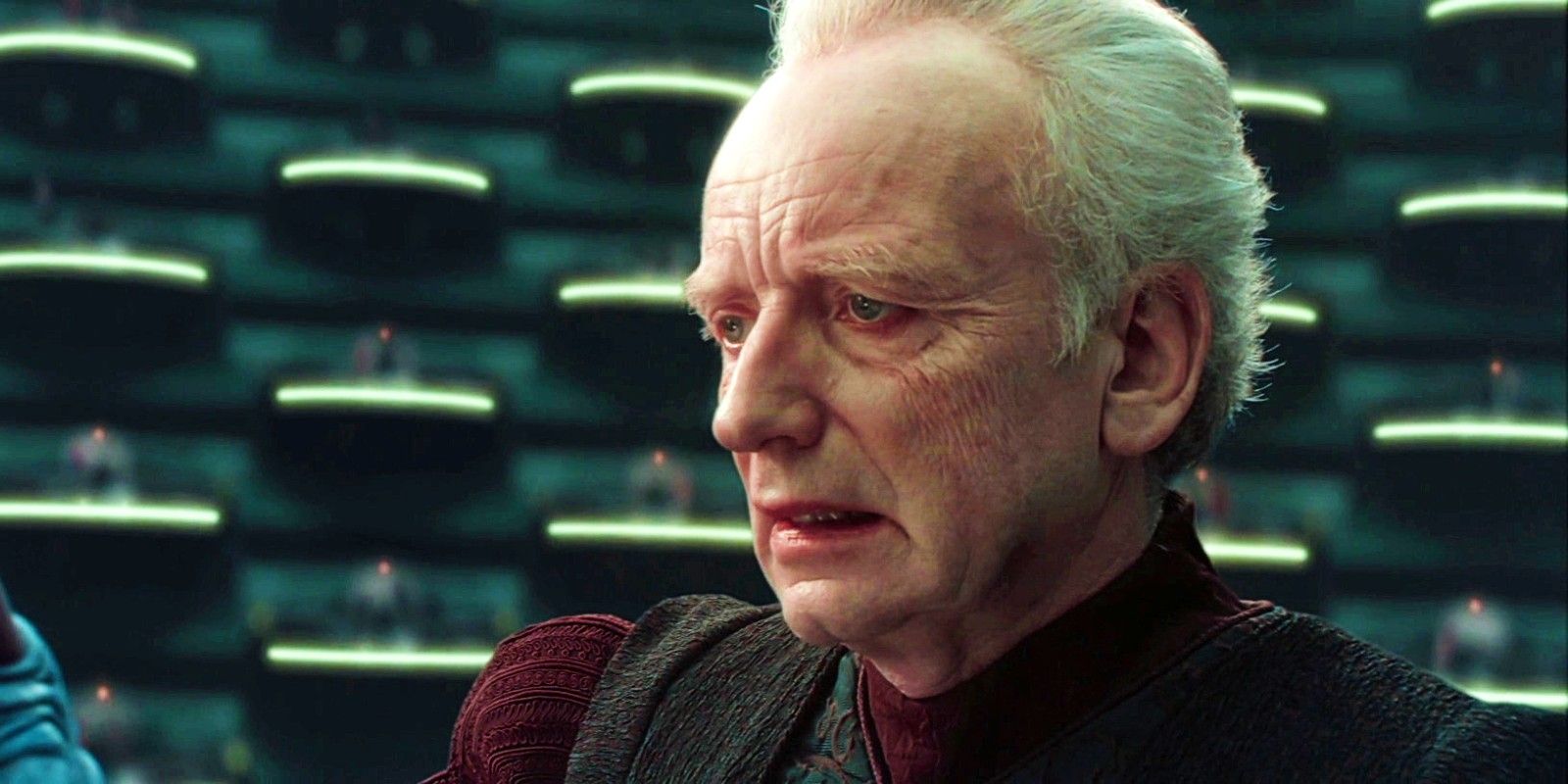
Star Wars: Episode II – Attack of the Clones is not only George Lucas's weakest directorial effort but also the worst entry in the Star Wars universe. The primary issue with Attack of the Clones is its script, written by Lucas and Jonathan Hales. The first half of the movie mostly consists of expository scenes setting up the political situation in the Galactic Senate and explaining what has happened since Star Wars: Episode I – The Phantom Menace. When the dialogue isn't purely expository, it comes across as entirely unnatural, especially in Anakin and Padmé's falling-in-love subplot. There's a reason that Anakin's infamous "sand" quote is endlessly reposted on Star Wars subreddits and YouTube comment sections: it's so cringey. The stiff dialogue also means a lot of the actors' performances come across as awkward. The worst to be affected by this is Hayden Christensen in his portrayal of Anakin.
From a technical standpoint, Attack of the Clones is a digital filmmaking trailblazer. It was one of the first major Hollywood movies to be captured entirely on HD digital video, as opposed to physical film. George Lucas, once again at the forefront of visual effects, also made use of digital actors in Attack of the Clones. VFX artists created a new, all-digital version of Yoda, compared to the puppet used in The Phantom Menace's theatrical edition and the original trilogy. They also superimposed Christopher Lee's face onto a stunt double for his climatic fight against Anakin and Obi-Wan. Still, while this technology is impressive and groundbreaking, it does not rise above the rest of Attack of the Clones' failings.
Star Wars: Episode I – The Phantom Menace (1999)

When Star Wars: Episode I – The Phantom Menace was released in 1999, it had been 16 years since the last Star Wars movie, and 23 years since George Lucas had directed a movie. An astronomical amount of hype built up after he announced production on a new Star Wars movie, and unfortunately, The Phantom Menace could not live up to its high expectations.
The first prequel's most obvious disappointment is the introduction of Jar-Jar Binks, Star Wars's most hated character. Although he is a minor figure in terms of The Phantom Menace's story, Jar-Jar is present throughout much of the runtime after he is saved from an army of droids by Qui-Gon and Obi-Wan near the start of the movie. His severely unfunny comedic antics, including stepping in poop, can be irritating, and while he was intended to appeal to younger viewers and integrate kids into the Star Wars fandom, he's a huge turnoff for older viewers, including long-established fans.
Despite the issues with Jar-Jar Binks and the movie's pacing in the second act, The Phantom Menace does contain some fantastic moments that truly define Star Wars. The "Duel of the Fates" sequence with Qui-Gon and Obi-Wan versus Darth Maul at the climax of The Phantom Menace is one of the greatest lightsaber fights in the history of the Star Wars franchise. John Williams also provides some of his best work with the iconic score that accompanies the three-way duel. It is a brilliant ending to a flawed film.
Star Wars: Episode III – Revenge of the Sith (2005)
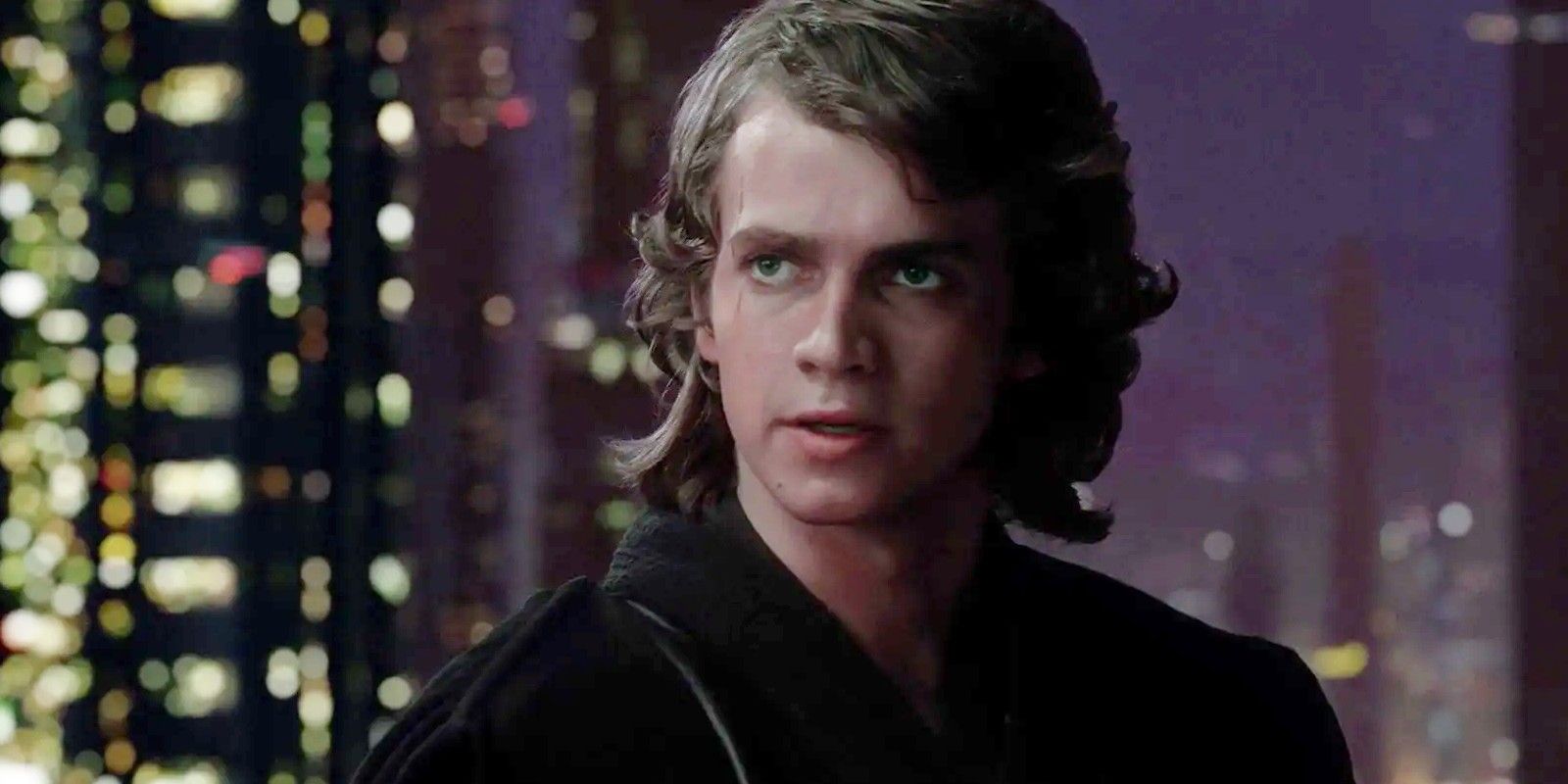
Star Wars: Episode III – Revenge of the Sith is the best of the Star Wars prequels, and to this day, it remains the last movie George Lucas has directed. The first Star Wars prequel to truly live up to the name, Revenge of the Sith opens with an incredible aerial action sequence between Anakin and Obi-Wan and a droid armada, led by General Grievous. The movie rarely lets up, featuring some of the best sequences in not only the prequels but all of Star Wars.
The movie's main weakness, alongside some continued awkward dialogue, is the speed at which Anakin Skywalker turns to the dark side. He flips from a noted Jedi Knight to a sworn Sith Lord in the space of a single scene. However, this is a minor flaw compared to those of the previous prequels. Hayden Christensen's performance as Anakin also pales in comparison to his threatening presence as Darth Vader. Once he becomes the iconic Sith Lord, Christensen truly comes alive as an actor. He is effortlessly believable as the evil Darth Vader, even when he ruthlessly slaughters a group of younglings off-screen.
The Mustafar-set duel between Anakin and Obi-Wan that concludes the prequel trilogy is the most intense and electrifying lightsaber fight of the entire Star Wars franchise. Part of the reason the scene is so effective, both in terms of its action and its emotional drama, is that Hayden Christensen and Ewan McGregor actually performed their duel together, without stunt doubles. The two actors rehearsed the scene extensively with stunt coordinator Nick Gillard for months, while George Lucas worked out how to film the fight using digital pre-visualization, another filmmaking tool that Lucas pioneered the use of.
THX 1138 (1971)
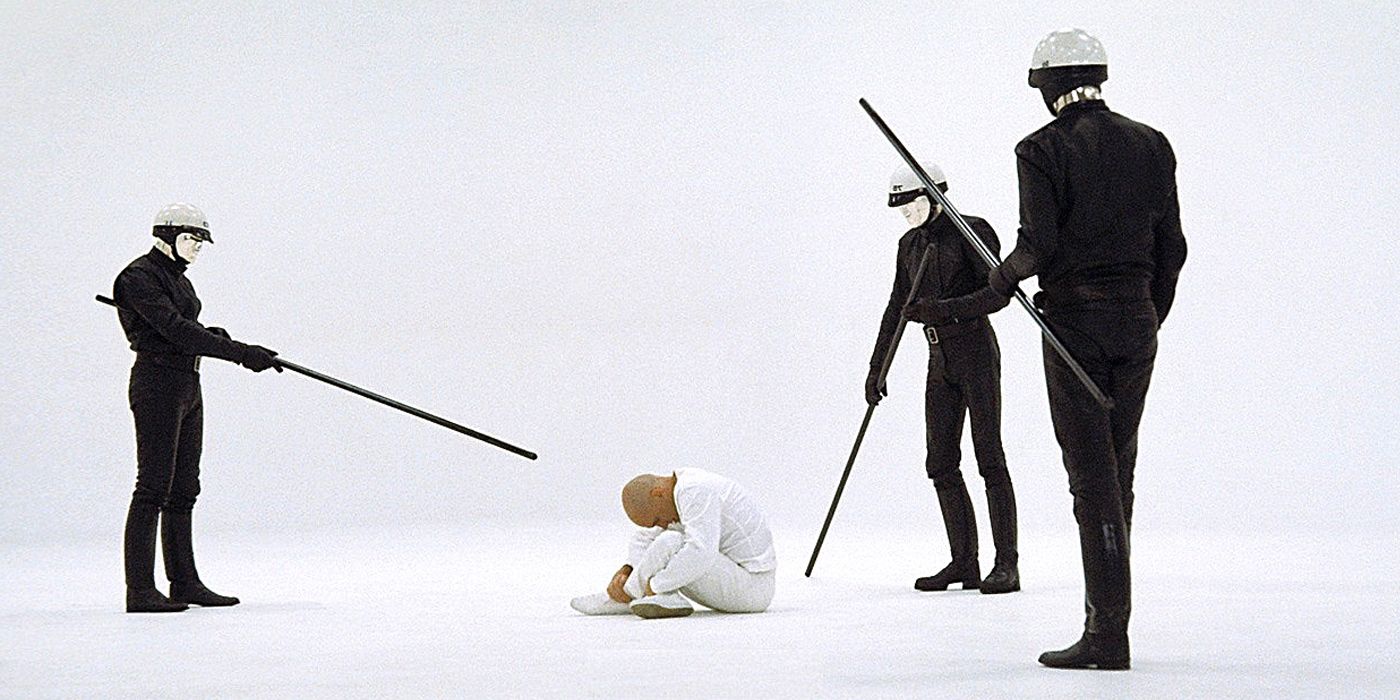
THX 1138 is not only George Lucas's first feature film as a director, but it's also the namesake for his sound company, THX, known for the famous "deep note." Despite its initial commercial failure and subsequent severing of a deal between Warner Bros. and American Zoetrope (the company of filmmaker Francis Ford Coppola, who produced Lucas's movie), THX 1138 deserves to be known as one of the best dystopian science fiction films ever made. Influenced by George Lucas's early interests in European Abstract cinema, THX 1138 is a completely different sci-fi beast than Star Wars.
Based on his earlier award-winning student film, THX 1138 feels like it was created by a contemporary of 1970s David Cronenberg rather than the man who would go on to create Star Wars, as it is incredibly similar to the clinical dystopias of Stereo and Crimes of the Future. THX 1138's story, however, is less than original, borrowing heavily from the works of George Orwell and Ray Bradbury in its tale of an illegal love story in a futuristic society (Lucas would later go on to recycle THX 1138's themes for Star Wars). Despite this, and THX 1138 being his feature directorial debut, Lucas displays an incredibly strong visual style in THX 1138 with its stark white backgrounds, sea of shaved heads, and blank, metal faces of the robot cops.
Similar to the original Star Wars trilogy, the theatrical cut of THX 1138 is worth seeking out, as Lucas released a CGI-laced Director's Cut of his first movie in 2004. The visual effects work removes the verisimilitude of the original version as it simply does not look like the effects were created in the 1970s. Despite this, any version of THX 1138 is worth watching to see George Lucas's promise as both a storyteller and a director.
American Graffiti (1973)
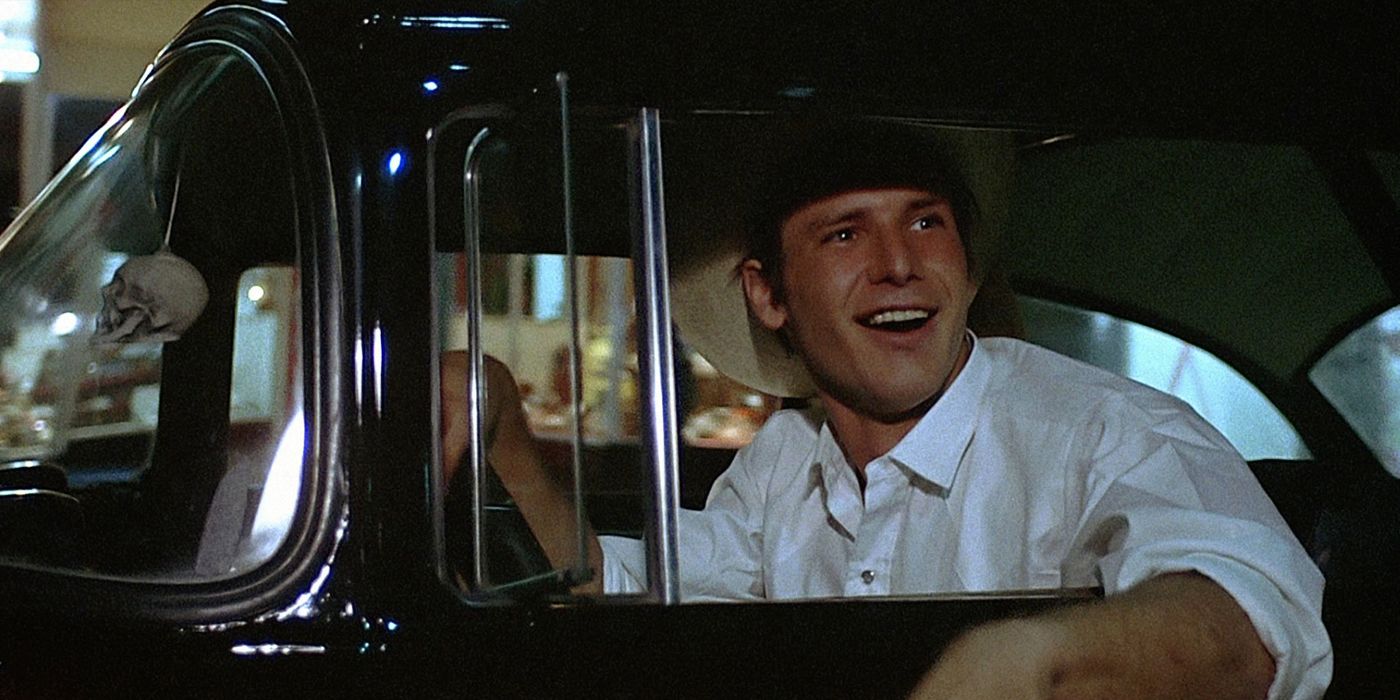
American Graffiti, George Lucas's second movie, is a classic coming-of-age comedy that would go on to be referenced in many future Star Wars projects. Inspired by Lucas's adolescent interests in cars and racing, American Graffiti focuses on the cruising culture of teenagers in the 1960s. In direct contrast to THX 1138, American Graffiti was a massive box office hit in 1973, making $140 million off of a less than $1 million budget.
In the Disney+ documentary about ILM, Light & Magic, American Graffiti star Ron Howard describes George Lucas's acting notes as "cryptic." This hints toward Lucas's own admitted lack of interest in directing over producing, especially when it came to directing actors. However, this lack of interest gave the young cast a lot of freedom when it came to them crafting their performances, including their allowance to improvise. This helped to provide an atmosphere of realism to American Graffiti that makes it resonate to this day.
Ron Howard, who later made his own movies, including Solo: A Star Wars Story, also states in Light & Magic that "the cars were as important" to George Lucas as the actors. This is the perfect summation of Lucas's directorial style, which focuses on design, world-building, and special effects over crafting unique performances from actors. American Graffiti may be the only non-science fiction movie that George Lucas has directed, but its fantastic lightning-fast car chases and light and breezy atmosphere make it stand out in his filmography.
Star Wars (1977)
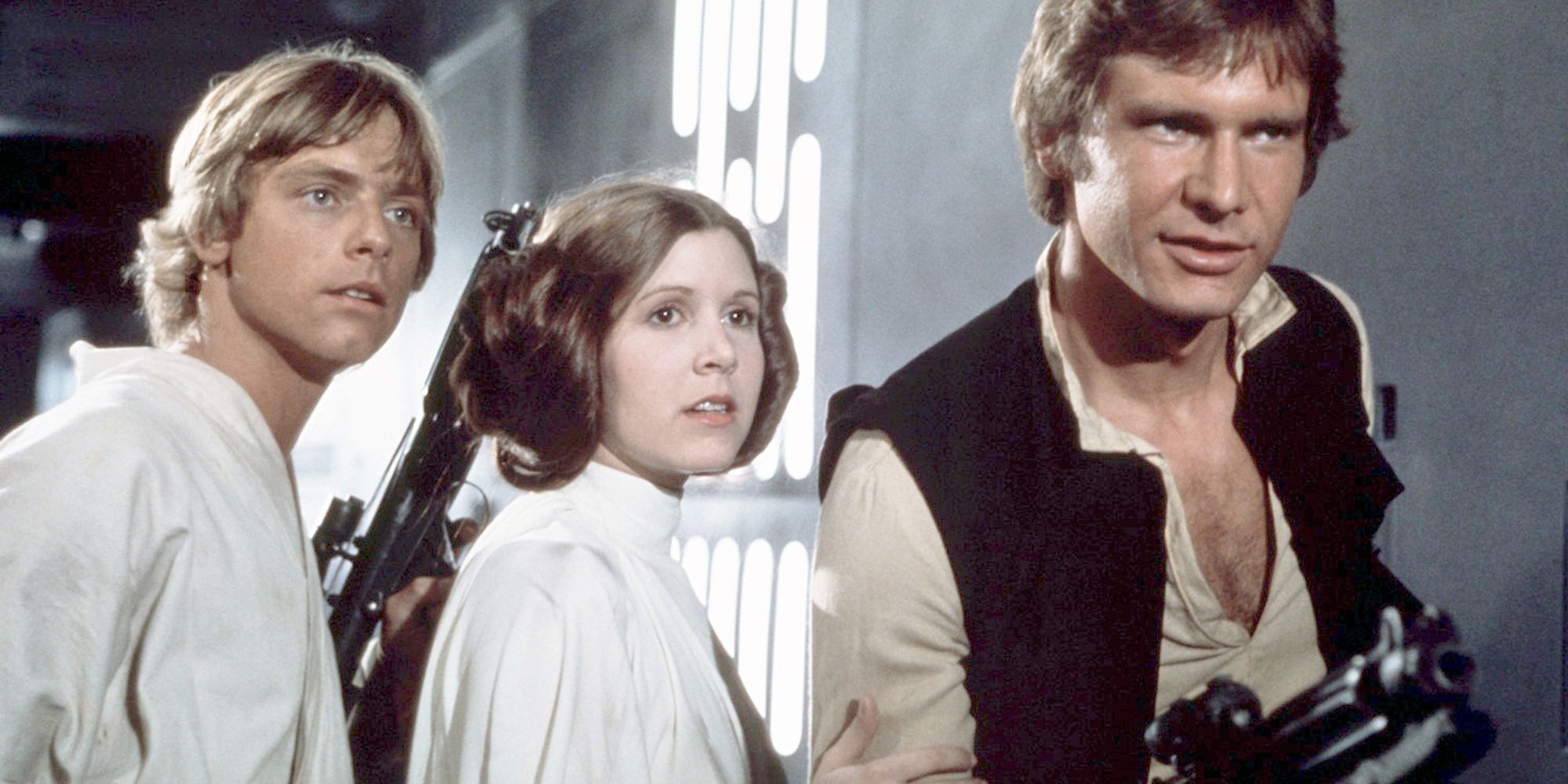
In Light & Magic, George Lucas states that "movies are special effects." Pitched initially as a low-budget production, the scrappy space opera Star Wars wound up being far more spectacular than that would imply. It may not have been the first blockbuster — Steven Spielberg's hugely popular semi-horror movie Jaws typically is given that particular distinction — but the original Star Wars did codify the blockbuster as a cultural phenomenon that was to change the way movies were made and marketed forever. The impact that Star Wars has had on the film industry cannot be overstated. With a total value estimated at over $70 billion, the Star Wars franchise is an all-encompassing brand today, but it all started with a small science fiction movie way back in 1977.
The main reason for Star Wars' success is that it is a fantastic movie. The story is simple, yet the characters' goals are clear. The main cast is fun and likable. The bad guys are delightfully evil. The special effects and action sequences are exciting and memorable. The first Star Wars, later labeled Episode IV and subtitled A New Hope, works perfectly as escapist entertainment. Lucas set out to make a movie with "dogfights in space," and he succeeded with flying colors, in no large part to the creation of one of the best-ever special effects houses, ILM.
Although many would argue that the original Star Wars is overshadowed by its ambitiously dark follow-up, The Empire Strikes Back, that movie and the series as a whole would not exist if that first movie had not succeeded in what it set out to achieve. Star Wars' practically perfect execution of a simple story, with incredible design, effects, and world-building, truly makes it George Lucas's masterpiece.
